What is a guideline for setting weight decays (e.g. l2 penalty) - and mainly, how do I track whether it's "working" throughout training? (i.e. whether weights are actually decaying, and by how much, compared to no l2-penalty).
1 Answers
A common approach is "try a range of values, see what works" - but its pitfall is a lack of orthogonality; l2=2e-4 may work best in a network X, but not network Y. A workaround is to guide weight decays in a subnetwork manner: (1) group layers (e.g. Conv1D stacks & LSTMs separately), (2) set target weight norm, (3) track.
(1): See here; the same arguments and suggested weight values won't apply to convs - thus the need for various groupings
(2): A sound option is the l2-norm of the weight matrix being regularized; then there's the question of which axis to compute it with respect to. A feature extraction-oriented approach is to select the channel axis (last in Keras), yielding a vector of length = number of channels / features, so that each element is the l2-norm of a channel.
(3): The l2-norm vectors can be appended to a list iteratively, or maybe their mean/max as briefer aggregate statistics - then plotted at the end of training.
A complete example shown below; the key function, weights_norm, is given at bottom, and is taken from See RNN. I also recommend Keras AdamW for improved weight decay.
Interpretation:
wd=2e-3decays output layer stronger than2e-4, but not input, suggesting a counterbalance interaction with the bottleneck layer.wd=2e-3yields lesser variance of weight norms relative to2e-4- Output conv layer's norms grow even with
2e-3, suggesting stronger gradients toward output - It is interesting to explore behavior with
BatchNormalizationadded
Code & explanation; the following is done:
Train & track progress
- Make dummy model & data, select
n_batchesandwd(l2 penalty) - Set up train loop, select
n_epochs - Create
l2_statsdict to track progress - On each train iteration, compute
weights_norm()and append tol2_stats
- Make dummy model & data, select
Preprocess progress data for plotting
- Get names of weight-decayed weights; include non-decayed in
omit_names l2_statsis convenient to append to, but must be converted tonp.ndarrayof proper dims; unpack so that.shape == (n_epochs, n_layers, n_weights, n_batches) -> (n_rows, n_cols, hists_per_subplot). Note that this requires number of weight matrices tracked to be the same for each layer
- Get names of weight-decayed weights; include non-decayed in
Plot
- Explicitly set
xlimsandylimfor even comparison among differentwdvalues - Two stats are computed by default:
np.mean(orange), andnp.max. Latter is also how Keras handlesmaxnormweight regularization.
- Explicitly set
import numpy as np
import tensorflow as tf
import random
np.random.seed(1)
random.seed(2)
tf.compat.v1.set_random_seed(3)
from keras.layers import Input, Conv1D
from keras.models import Model
from keras.regularizers import l2
from see_rnn import weights_norm, features_hist_v2
########### Model & data funcs ################################################
def make_model(batch_shape, layer_kw={}):
"""Conv1D autoencoder"""
dim = batch_shape[-1]
bdim = dim // 2
ipt = Input(batch_shape=batch_shape)
x = Conv1D(dim, 8, activation='relu', **layer_kw)(ipt)
x = Conv1D(bdim, 1, activation='relu', **layer_kw)(x) # bottleneck
out = Conv1D(dim, 8, activation='linear', **layer_kw)(x)
model = Model(ipt, out)
model.compile('adam', 'mse')
return model
def make_data(batch_shape, n_batches):
X = Y = np.random.randn(n_batches, *batch_shape)
return X, Y
########### Train setup #######################################################
batch_shape = (32, 100, 64)
n_epochs = 5
n_batches = 200
wd = 2e-3
layer_kw = dict(padding='same', kernel_regularizer=l2(wd))
model = make_model(batch_shape, layer_kw)
X, Y = make_data(batch_shape, n_batches)
## Train ####################
l2_stats = {}
for epoch in range(n_epochs):
l2_stats[epoch] = {}
for i, (x, y) in enumerate(zip(X, Y)):
model.train_on_batch(x, y)
print(end='.')
verbose = bool(i == len(X) - 1) # if last epoch iter, print last results
if verbose:
print()
l2_stats[epoch] = weights_norm(model, [1, 3], l2_stats[epoch],
omit_names='bias', verbose=verbose)
print("Epoch", epoch + 1, "finished")
print()
########### Preprocess funcs ##################################################
def _get_weight_names(model, layer_names, omit_names):
weight_names= []
for name in layer_names:
layer = model.get_layer(name=name)
for w in layer.weights:
if not any(to_omit in w.name for to_omit in omit_names):
weight_names.append(w.name)
return weight_names
def _merge_layers_and_weights(l2_stats):
stats_merged = []
for stats in l2_stats.values():
x = np.array(list(stats.values())) # (layers, weights, stats, batches)
x = x.reshape(-1, *x.shape[2:]) # (layers-weights, stats, batches)
stats_merged.append(x)
return stats_merged # (epochs, layer-weights, stats, batches)
########### Plot setup ########################################################
ylim = 5
xlims = (.4, 1.2)
omit_names = 'bias'
suptitle = "wd={:.0e}".format(wd).replace('0', '')
side_annot = "EP"
configs = {'side_annot': dict(xy=(.9, .9))}
layer_names = list(l2_stats[0].keys())
weight_names = _get_weight_names(model, layer_names, omit_names)
stats_merged = _merge_layers_and_weights(l2_stats)
## Plot ########
features_hist_v2(stats_merged, colnames=weight_names, title=suptitle,
xlims=xlims, ylim=ylim, side_annot=side_annot,
pad_xticks=True, configs=configs)
- 1
- 9
- 53
- 101
